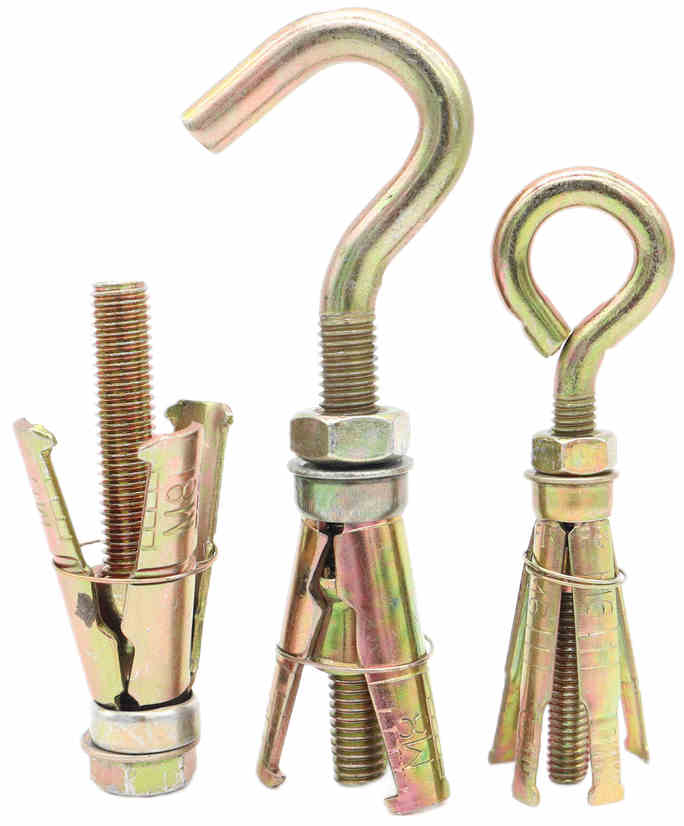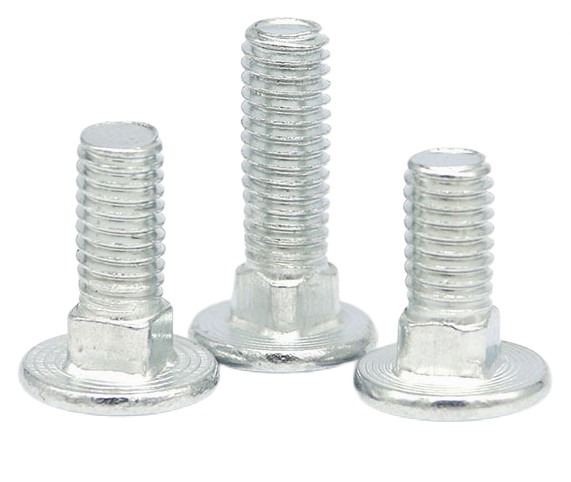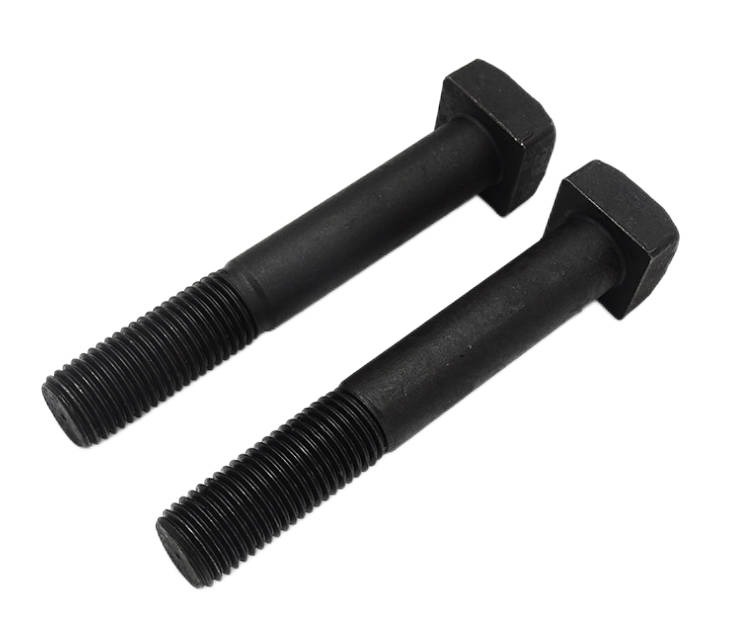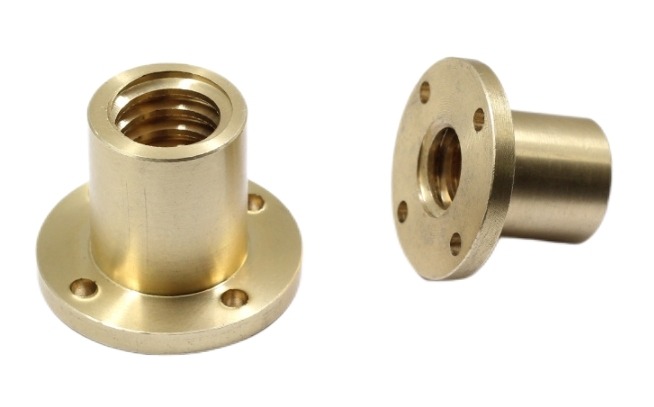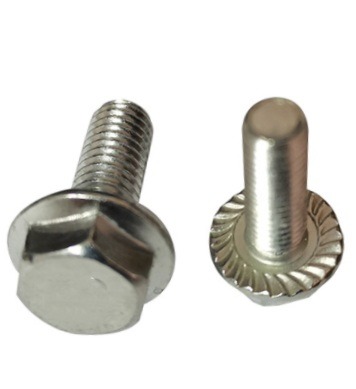Eye Bolts and Eye Screws: Everything You Need to Know
Eye bolts and eye screws are essential fastener components widely used in various industries and everyday applications. They provide reliable attachment points and are favored for their simplicity and ease of use. Let’s delve into their definitions, importance, and the wide array of applications they serve.
What are Eye Bolts and Eye Screws
What are Eye Bolts
An eye bolt is a type of fastener with a circular loop, known as an “eye,” at its head. The eye allows for the attachment of ropes, chains, or other hardware to create secure lifting and rigging points. Eye bolts are typically made of strong materials like steel and are available in various sizes and configurations to meet specific load requirements.
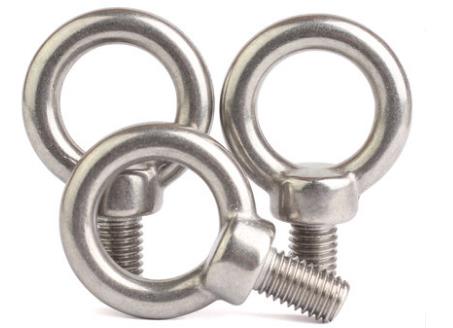
What are Eye Screws
Eye screws, on the other hand, are screws with an eye-shaped loop at the top instead of a traditional head. Like eye bolts, they serve as attachment points and are designed for applications where a screw-in method is preferred over a bolt-in method. Eye screws are commonly made of materials like stainless steel or zinc-plated steel for added strength and corrosion resistance.
Importance and Applications of Eye Bolts and Eye Screws
The significance of eye bolts and eye screws lies in their versatility and ability to create secure attachment points in diverse scenarios. These hardware components find applications in a wide range of industries, including construction, marine, aerospace, and manufacturing. Some common applications include rigging and lifting heavy loads, hanging and suspending objects, and creating secure points for tying down equipment during transportation.
Types and Variations of Eye Bolts
Eye bolts come in various types and configurations, each designed to cater to specific needs. Let’s explore the most common types of eye bolts:
Straight Shank Eye Bolts
Straight shank eye bolts have a straight, cylindrical shank with a threaded end to facilitate easy installation into various materials. They are commonly used for light to medium-duty applications.
Shoulder Eye Bolts
Shoulder eye bolts feature a shoulder between the eye and the threaded shank. This design prevents the bolt from rotating when under load, making them ideal for angular lifting and rigging applications.
Collared Eye Bolts
Collared eye bolts have a collar under the eye, providing additional support and distributing the load evenly. This design is suitable for heavy-duty applications and ensures stability during lifting and rigging operations.
Welded Eye Bolts
Welded eye bolts have a closed eye loop and a welded shank, making them a permanent attachment point. They are often used in construction and fabrication applications.
Swivel Eye Bolts
Swivel eye bolts have a rotating eye, allowing for more flexibility and reduced stress on the attached ropes or chains. They are ideal for applications requiring movement or rotation.
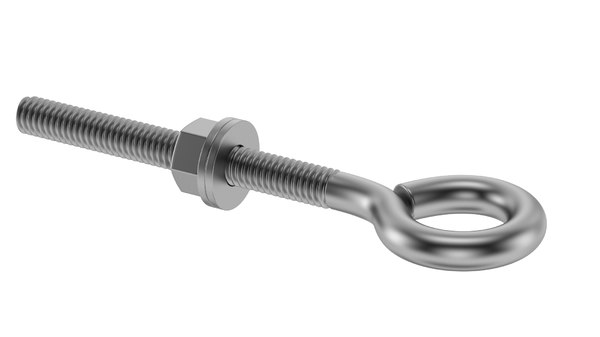
Common Uses of Eye Bolts
Eye bolts find extensive use across various industries due to their reliability and strength. Some of the common applications include:
Rigging and Lifting Applications
Eye bolts are widely used for rigging and lifting heavy objects, such as machinery, equipment, and industrial components. They provide secure attachment points for chains and slings, ensuring safe and efficient lifting operations.
Hanging and Suspending Objects
In construction, eye bolts are employed for hanging and suspending objects like light fixtures, signs, and decorations. They are also useful for supporting cables in suspension bridges and similar structures.
Secure Attachment Points in Various Industries
Eye bolts are commonly used in the marine industry for securing sails and rigging on boats and ships. They also serve as anchor points for safety harnesses and fall protection systems in the construction and maintenance of tall structures.
Types and Variations of Eye Screws
Eye screws come in various types and configurations, each suitable for specific applications. Here are the most common types of eye screws:
Wood Screw Eye Bolts
Wood screw eye bolts have a pointed, threaded end that allows them to be screwed directly into wooden surfaces. They are frequently used for hanging lightweight objects or creating tie-down points.
Lag Thread Eye Screws
Lag thread eye screws have a coarse, lag-style thread, enabling them to anchor securely into wood or other materials with higher load-bearing capacity. They are commonly used for hanging heavy items and outdoor applications.
Hanger Eye Screws
Hanger eye screws are designed for suspending items from ceilings, walls, or overhead structures. They have a closed loop eye and are often used in art galleries and retail spaces for hanging displays.
Shoulder Eye Screws
Shoulder eye screws feature a shoulder between the eye and the threaded portion, similar to shoulder eye bolts. They provide added stability and are used in angular suspension applications.
Swivel Eye Screws
Swivel eye screws have a rotating eye, offering flexibility when attaching ropes or wires. They are commonly used for hanging plants, decorations, and other lightweight objects.
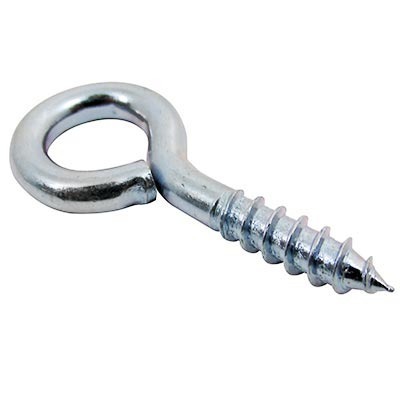
Common Uses of Eye Screws
Eye screws are popular due to their easy installation and ability to provide sturdy attachment points. Some common applications include:
Hanging and Securing Objects in Wood and Drywall
Eye screws are widely used for hanging picture frames, mirrors, and small shelves in wooden or drywall surfaces. Their ease of installation makes them a preferred choice for DIY projects.
Outdoor and Indoor Applications
Eye screws with weather-resistant materials like stainless steel are commonly used for outdoor applications, such as hanging garden ornaments, bird feeders, and outdoor lights.
DIY Projects and Home Improvement
Eye screws are indispensable in various home improvement projects. They can be used to create hanging points for curtains, planters, and other decorative elements.
How to Choose the Right Ones Between Eye Bolts and Eye Screws
When selecting eye bolts or eye screws for a specific application, several factors should be considered:
- Load Capacity: Determine the maximum weight the eye bolt or eye screw needs to support. Choose a type that can handle the intended load.
- Material: Select a material that matches the environmental conditions and load requirements. Stainless steel is commonly used for outdoor applications due to its corrosion resistance, while zinc-plated or galvanized options are suitable for indoor use.
- Size and Type: Consider the size and type of eye bolt or eye screw that best suits the application. Straight shank eye bolts may be sufficient for light loads, while shoulder or collared eye bolts are better for heavy-duty applications.
- Installation Method: Determine whether a screw-in eye screw or a bolt-in eye bolt is more suitable for the project. For wood surfaces, wood screw eye bolts are the preferred choice, while lag thread eye screws work well for heavier loads.
- Swivel Capability: If the application requires movement or rotation, consider using swivel eye bolts or eye screws.
- Safety Standards: Ensure that the chosen eye bolt or eye screw complies with relevant safety standards and regulations.
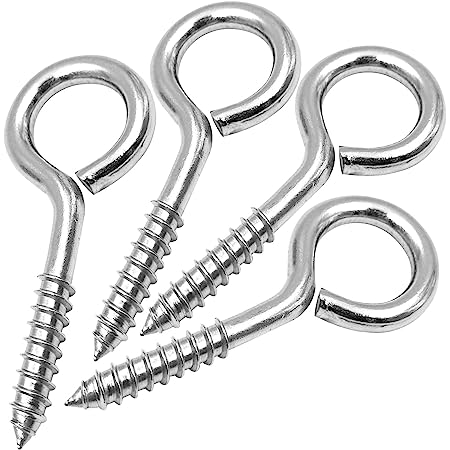
Conclusion
In conclusion, eye bolts and eye screws are essential hardware components with a wide range of applications. Their versatility and strength make them indispensable in various industries and everyday tasks. When selecting the appropriate eye bolt or eye screw, it’s crucial to consider the load capacity, material, and type that best suits the intended use. By understanding these factors, users can ensure the safe and efficient use of eye bolts and eye screws in their projects, whether in industrial settings, home improvement, or DIY endeavors. Always prioritize safety and follow manufacturer guidelines for installation and usage to ensure optimal performance and reliability.


